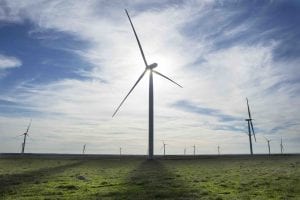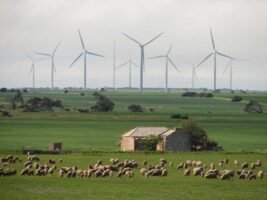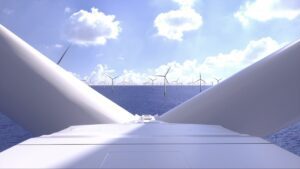The clock is now ticking for the Victoria government to finalise the transmission connections for its first offshore wind zone in Gippsland, says the chief of the most prominent project in the field.
Charles Rattray, CEO of the 2.2 gigawatt Star of the South offshore wind project, said that although state agency Vic Grid had begun making statements on how it wants to plan the grid connections, no developers will start building anything until these are firm.
“The most important thing to understand is you can’t start construction on an offshore wind farm until you have certainty about that transmission asset. When you have the transmission in place, we can start building,” Rattray told the Australian Wind Energy conference on Wednesday.
VicGrid launched consultations on grid connections for the new industry in April, around the same time as the feasibility licence application period closed.
Star of the South is regarded as the country’s most advanced offshore wind project and has an ambitious estimated finishing date of 2028, which will require VicGrid to move quickly in order to allow it to start construction to meet that deadline.
Rattray also added his voice to a growing chorus that’s flagging Australia needs to do something to save a spot in global supply chain queues.
Where others have called more directly for government intervention, Rattray was less explicit.
“The major turbine suppliers, cable providers but also capital providers have any number of options of where to deploy their turbines, where to lay their cables, where they’re going to spend their capital,” he says.
“Australia needs to be moving quickly, we need to be making sure we give certainty to suppliers about the size of the industry, and when industry is going to be constructed. So all of those suppliers of turbines and cables and capital, they understand the pipeline.”
Confident of winning a licence
Star of the South is prepping the environmental submission it will need to lodge next year if it wins a feasibility licence for its Gippsland offshore wind project — before it has secured one of the coveted licences.
After five years of very public work and being awarded major project status by federal and state governments in 2022, it would be a brave government to deny the project a licence.
Rattray believes they have told “a compelling story about why Star of the South would be a worthy recipient of a feasibility licence”, but they are of course awaiting the government decision.
Some 37 companies applied for projects in the Gippsland region, but of the public ones Star of the South has some difficulties the others don’t, namely the proximity to the coast as it’s only 10km offshore and will be visible from the shore.
Star of the South, which is owned by Danish investor Copenhagen Infrastructure Partners and local super fund CBus, is not the only company operating in anticipation of receiving a licence.
Flotation Energy telegraphed last week that it too is starting the data collection that will be required once a licence is awarded for its 2GW Seadragon project.
Other challenges
Keeping their social licence and finding the 2000 people Star of the South estimates it might need to build the project are two issues that keep Rattray up at night.
But others are out of the company’s control.
Rattray named ports and off-take arrangements as two areas the industry needs to be ready to go when they are.
The first few offshore wind project will require some kind of subsidy to bridge the gap between the cost of the power generated and the price Victorians will pay.
The Victoria government has already said it is considering a contracts for difference approach, as used in the UK, and the first auction will be in 2025.
Currently Australia does not have any ports which can handle the huge towers and blades that make up an offshore wind turbine. The Victoria government has nominated the Port of Hastings on the Mornington Peninsula as its preferred offshore wind port, with a proposal to handle up to 1GW of capacity a year, and individual turbines of up to 18MW.
It will require two berths with a total wharf length of at least 400m to accommodate these massive turbines, possible dredging to handle heavy lift vessels, and reclaimed land to create 35 hectares of heavy duty hardstand.
Rattray says on a recent visit it was clear work has already started to get the port ready for its new role.
See also: Offshore wind industry says “perfect storm” will pass, but strong targets needed










